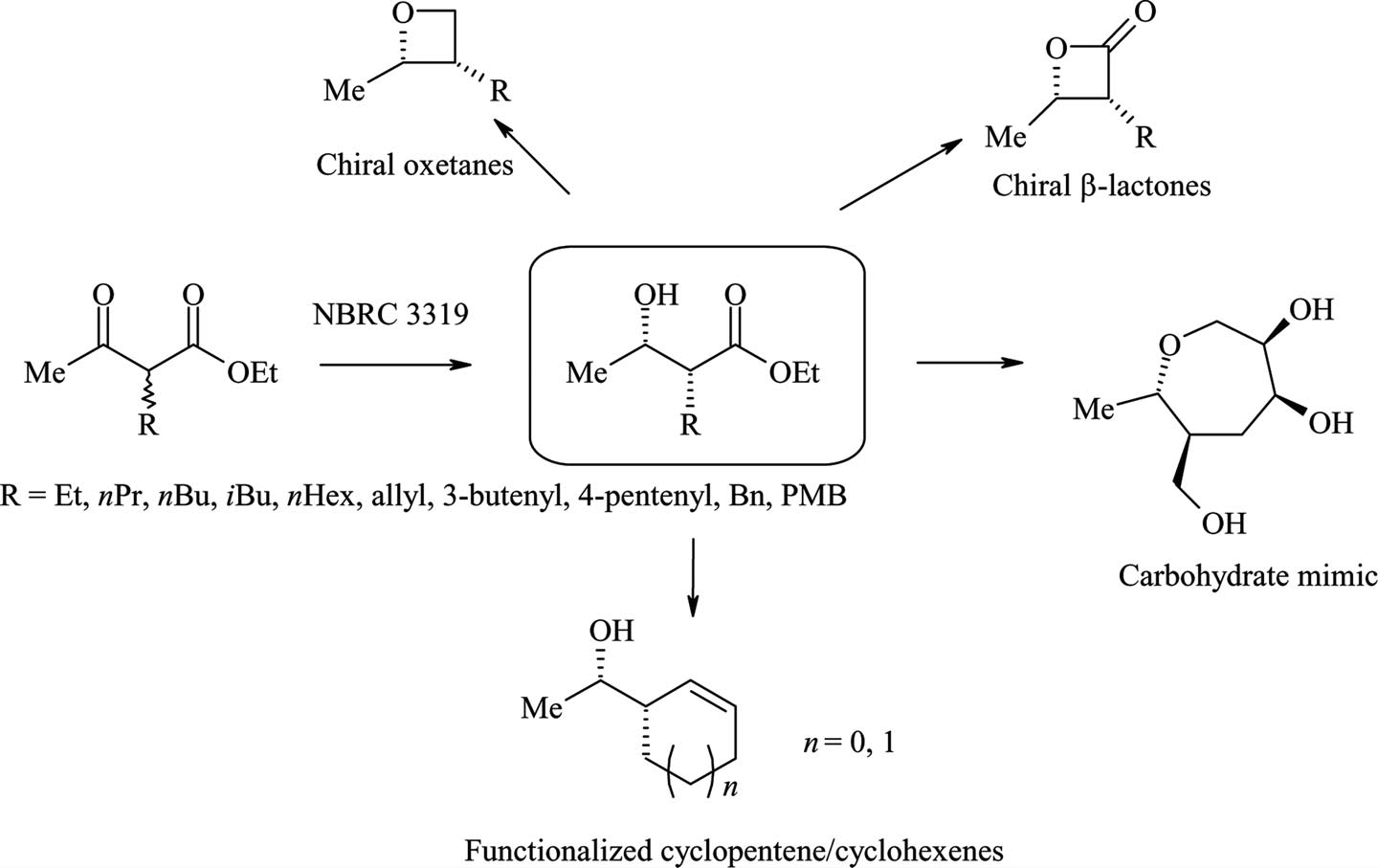Klebsiella pneumoniae
CAS number: 68583-24-4
Klebsiella pneumoniae is a Gram-negative, non-motile, encapsulated, lactose-fermenting, facultative anaerobic, rod-shaped bacterium. It appears as a mucoid lactose fermenter on MacConkey agar.
Related images

Klebsiella pneumoniae (NBRC 3319) mediated synthesis of various 2-substitited β-hydroxy esters and proposed synthetic manipulations.

Exclusive formation of syn-β-hydroxy oxo esters by Klebsiella pneumoniae.
Related Questions and Answers
A: The MIC of the crude extract from Bacillus nakamurai Tie-10 against Klebsiella pneumoniae is determined to be 1.56 mg/mL. At this concentration, the extract inhibits 80% of K. pneumoniae growth, as indicated by a clear well in the 96-well plate assay.
A: The crude extract from Bacillus nakamurai Tie-10 significantly downregulates the expression of virulence-associated genes in Klebsiella pneumoniae, including luxS, wabG, and fimH. The relative expression levels of these genes are reduced to 0.6-fold, 0.19-fold, and 0.1-fold compared to the control group, respectively. This downregulation suggests potent inhibitory effects on bacterial pathogenicity mechanisms.
A: The crude extract from Bacillus nakamurai Tie-10 significantly inhibits biofilm formation in Klebsiella pneumoniae in a concentration-dependent manner. At a concentration of 2 MIC, the extract achieves a maximum biofilm suppression rate of 51.63%, nearly completely inhibiting biofilm development.
A: The crude extract from Bacillus nakamurai Tie-10 disrupts the cellular integrity of Klebsiella pneumoniae by causing significant membrane damage, as evidenced by increased alkaline phosphatase (AKP) content in the culture medium and severe morphological alterations observed under scanning electron microscopy (SEM). This damage leads to cellular content leakage and loss of structural organization.
A: The crude extract from Bacillus nakamurai Tie-10 effectively inhibits the growth of Klebsiella pneumoniae by disrupting cellular integrity, inhibiting extracellular protease secretion, downregulating virulence-associated genes, and preventing biofilm formation. These mechanisms collectively contribute to its potent antibacterial activity.
A: The prevalence of carbapenem-resistant Klebsiella pneumoniae (CRKP) in Romania has significantly increased from 4.9% in 2010 to 41.6% in 2024. This rise is associated with increased antibiotic consumption, particularly during the COVID-19 pandemic. The study highlights the emergence of strains producing NDM+OXA48-like carbapenemases, which have become the dominant type in recent years, posing a significant threat to public health.
A: The study found that Klebsiella variicola and global MDR-associated Kp clonal groups (CGs) were associated with a higher 30-day fatality rate compared to other Kp CGs. Specifically:
Klebsiella variicola: 30-day case-fatality rate was 16.9% (aHR 1.86, CI 1.10–3.17, p = 0.02).
Global MDR-associated Kp CGs: 30-day case-fatality rate was 17.0% (aHR 1.52, CI 0.98–2.38, p = 0.06).
Klebsiella variicola: 30-day case-fatality rate was 16.9% (aHR 1.86, CI 1.10–3.17, p = 0.02).
Global MDR-associated Kp CGs: 30-day case-fatality rate was 17.0% (aHR 1.52, CI 0.98–2.38, p = 0.06).